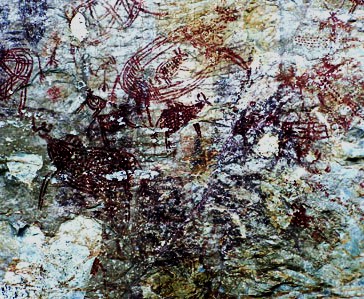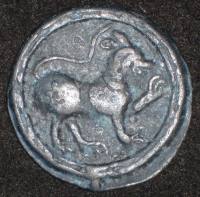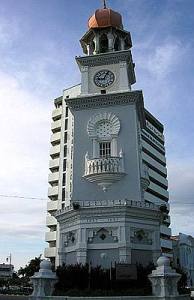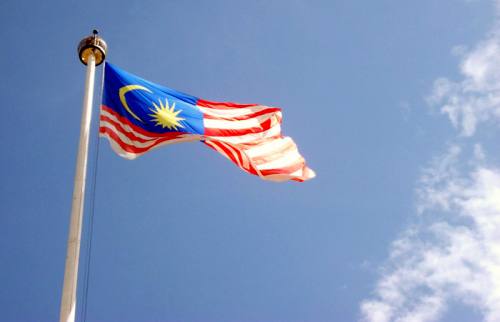Malaysia History
Malaysia historically as old as history itself. Due to its location and the sea ports Malaysia had attracted many nations of the world and it remained an important country in the East. Malaysia remained under the influence of India (Pre Islamic), the Muslims from Middle East and Christian from Europe to its west, and China and Japan with one of successive phases of outside influence, followed by the mid-twentieth century establishment of independence from foreign colonial powers.
Prehistoric Malaysia
 Archaeological
remains have been found throughout peninsular Malaysia, Sabah and Sarawak. The
earliest evidence of human habitation in the area dates back 40,000 years.
These Mesolithic hunters were probably the ancestors of the Semang, an ethnic
Negrito group who have a deep ancestry within the Malay Peninsula.
Archaeological
remains have been found throughout peninsular Malaysia, Sabah and Sarawak. The
earliest evidence of human habitation in the area dates back 40,000 years.
These Mesolithic hunters were probably the ancestors of the Semang, an ethnic
Negrito group who have a deep ancestry within the Malay Peninsula.
The Senoi appear to be a composite group, with approximately half of the maternal DNA lineages tracing back to the ancestors of the Semang and about half to later ancestral migrations from Indochina. Scholars suggest they are descendants of early Austronesian-speaking agriculturalists, who brought both their language and their technology to the southern part of the peninsula approximately 4,000 years ago. They united and coalesced with the indigenous population.
The Proto Malays have a more diverse origin Although they show some connections with Maritime Southeast Asia, some also have an ancestry in Indochina around the time of the Last Glacial Maximum, about 20,000 years ago. Anthropologists support the notion that the Proto-Malays originated from what is today Yunnan, China.[6] This was followed by an early-Holocene dispersal through the Malay Peninsula into the Malay Archipelago.[7] Around 300 BC, they were pushed inland by the Deutero-Malays, an Iron Age or Bronze Age people descended partly from the Chams of Cambodia and Vietnam. The first group in the peninsula to use metal tools, the Deutero-Malays were the direct ancestors of today's Malaysian Malays
 Hindu Period
Hindu Period
The Early Malaysian was somewhat dominated by Hindu and Buddhist cultures from India. It was at its peak in the Sumatran-based Srivijaya civilization, whose influence extended through Sumatra, Java, the Malay Peninsula and much of Borneo from the 7th to the 14th centuries. Mass conversion to Islam only occured after the arrival of Arab traders during the Melaka Sultanate.
16th Century Portuguese & Dutch Colony
In the 16th century when the Portuguese established the first European colony in Southeast Asia by defeating the Melaka Sultanate. The Portuguese subsequently then lost Malacca to the Dutch.
 1786 British Took over Penang Area
1786 British Took over Penang Area
The British also established their first colony on the Malay peninsula in Penang in 1786, when it was ceded by the Sultan of Kedah. Finally, the area was divided into Dutch and British spheres of influence with the signing of the Anglo-Dutch Treaty in 1824. With this treaty, the Dutch agreed to cede Malacca to the British and in return, the British ceded all their colonies on Sumatra to the Dutch. The line which divided the Malay world into Dutch and British areas roughly corresponds to what is now the border between Malaysia and Indonesia.
Before World War II, the Malay Peninsula was governed by the British as the Federated Malay States (Selangor, Perak, Negeri Sembilan and Pahang), which were governed as a single entity, the Unfederated Malay States (Johor, Kedah, Perlis, Terengganu and Kelantan), which were each governed as separate protectorates, and the Straits Settlements (including Malacca, Penang and Singapore), which were crown colonies. Northern Borneo consisted of the British colony of North Borneo, the Kingdom of Sarawak, which was ruled by a British family known as the "White Rajas", and the British protectorate of Brunei.
World War II British Pushed to Singapore by Japanese
World War II was disastrous for the British Malayan Command. The Japanese swept down both coasts of the Malay Peninsula and despite fierce fighting, much of the British military was tied down fighting the Germans in Europe and those that remained in Malaya simply couldn't cope with the Japanese onslaught. The British military equipment left to defend Malaya were outdated and no match for the modern ones used by the Japanese, while the only two battleships based in the region, the HMS Prince of Wales and HMS Repulse, were sank by Japanese bombers off the East Coast of Malaya. By 31 January 1942, the British had been pushed all the way back to Singapore, which also fell to the Japanese on 15 February 1942. The situation was no different on Borneo, which fell to the Japanese on 1 April 1942 after months of fierce fighting.
British regain power and form Malayan Union
After World War II, the Federated Malay States, Unfederated Malay States and the Straits Settlements of Malacca and Penang were federated to form a single British colony known as the Malayan Union, with Singapore splitting off to form a separate colony. In the Malayan Union, the sultans of the various states ceded all their powers except those in religious affairs to the British crown. However, widespread opposition to the Malayan Union led the British to reconsider their position, and in 1948, the Malayan Union was replaced by the Federation of Malaya, in which the executive positions of the sultans were restored. In Borneo, the White Rajas ceded Sarawak to the British crown in 1946, making it a crown colony of the United Kingdom.
1957 Independence of Malay
Malaya gained independence from the British in 1957. The Union Jack was lowered and the first Malayan flag was raised in the Merdeka (independence) Square on midnight 31st August 1957.

16th September 1963 Merger of Malaya & Sigapore formed Malaysia
Six years later, Malaysia was formed on 16th September 1963 through a merging of Malaya and Singapore, as well as the East Malaysian states of Sabah (known then as North Borneo) and Sarawak on the northern coast of Borneo, with Brunei deciding not to join. The first several years of the country's history were marred by the Indonesian confrontation (konfrontasi) as well as the Philippines' claims to Sabah. Singapore was expelled from the federation on 9th August 1965 after several bloody racial riots, as its majority Chinese population and the influence of the People's Action Party led by Lee Kuan Yew (later the long-ruling Prime Minister of Singapore) were seen as a threat to Malay dominance, and it became a separate country.
Malaysian Current Politics
Malaysia is a constitutional monarchy, nominally headed by the Paramount Ruler (Yang di-Pertuan Agong), who is "elected" by the sultans for a five-year term from among the nine sultans of the Malay states, though in practice the election usually follows a prescribed order based on the seniority of the sultans at the time of independence. This gives Malaysia a unique political system of rotational monarchy, in which each of the sultans would take turns to be the king of Malaysia. The current king, from Terengganu, was sworn in on 13 Dec 2006.
Malaysia's government is largely based on the British Westminster system, consisting of a bicameral national parliament, with each of the states also having their own unicameral Dewan Undangan Negeri (State Legislative Assembly). The lower house, known as the Dewan Rakyat (Hall of the People) is elected directly by the people. The upper house, known as the Dewan Negara (National Hall), consists of 26 members elected by the state governments, with each state having 2 representative, while the remaining members are appointed by the king. The head of government is the Prime Minister, who is the party leader of the winning party in the lower house. The United Malays National Organisation (UMNO) party and its National Front (Barisan Nasional) coalition have ruled Malaysia uninterrupted since its independence, and while periodic elections are contested by feisty opposition parties, the balance has so far always been shifted in the government's favor, partly due to press control and use of restrictive security legislation dating from the colonial era.
In practice, the king is only the nominal Head of State, while the Prime Minister is the one who wields the most authority in government.



